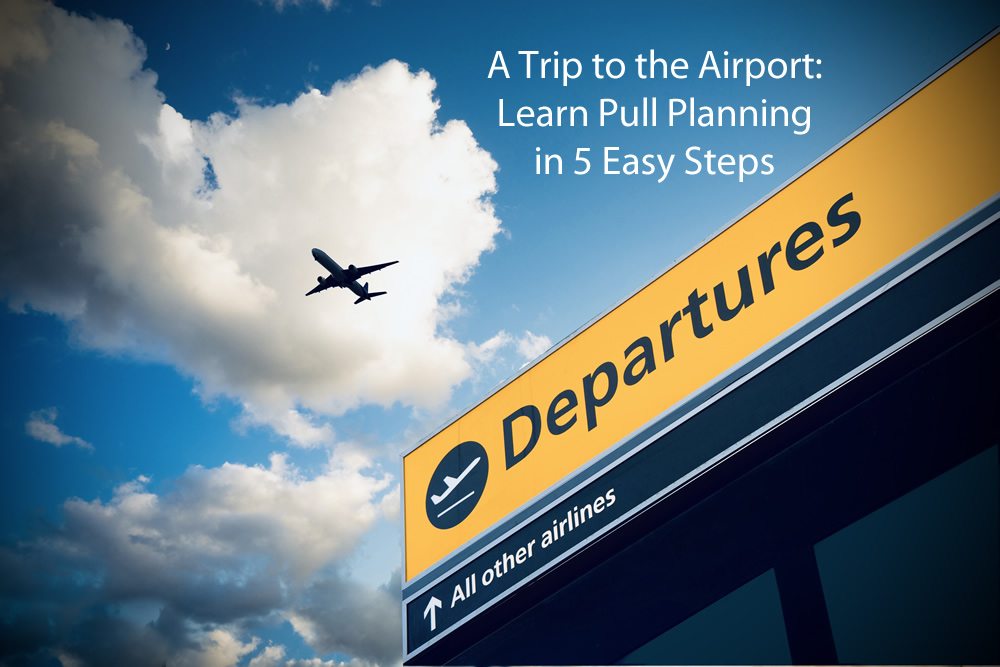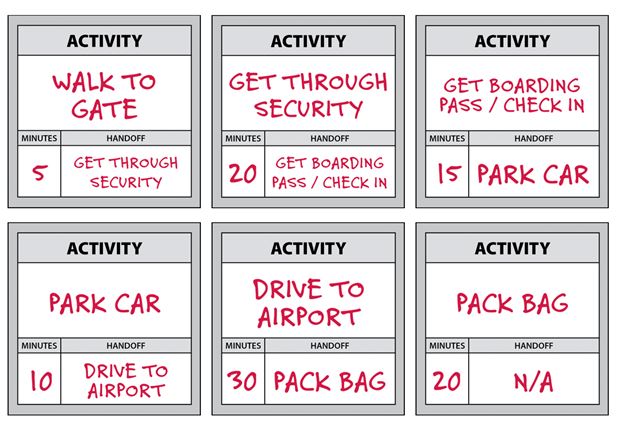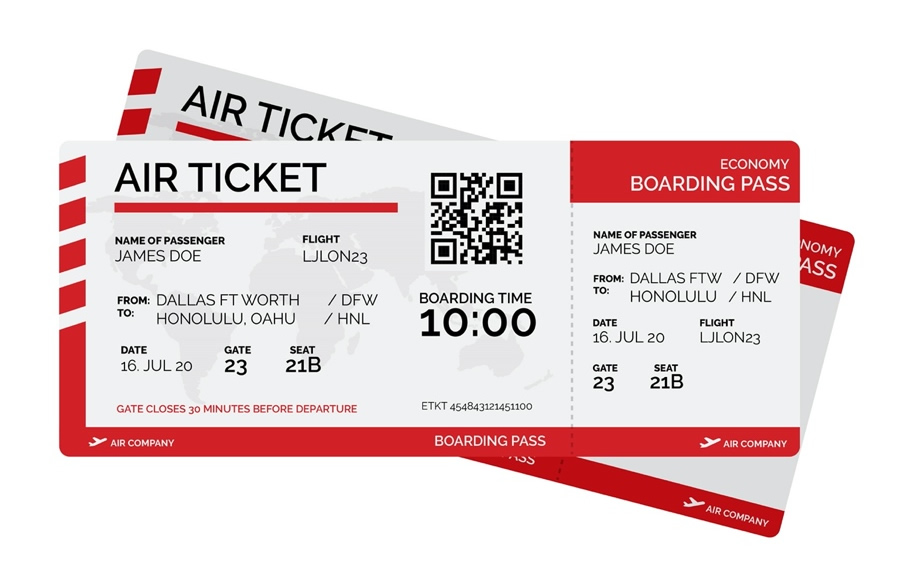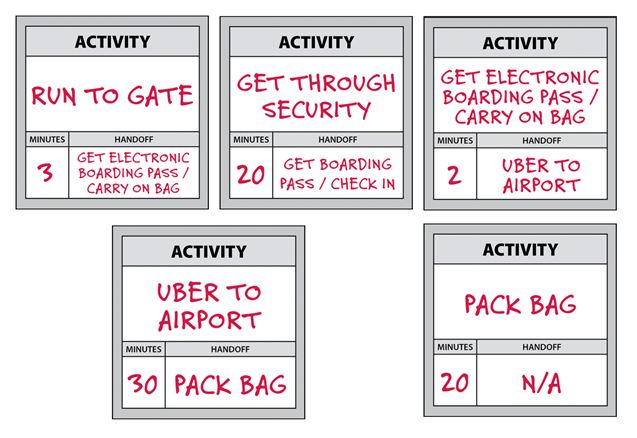A Trip to the Airport: Learn Pull Planning in 5 Easy Steps
Explaining pull planning to trade partners who are new to the concept can be a challenge. Most of the schedules that our trade partners are used to working with—such as the critical path method (CPM)—are push schedules. This means the schedule is based on the work that’s being ordered to advance the project. In a push schedule, the superintendent will release trade foremen to begin work when an activity is scheduled to start—even if the project isn’t quite ready for it yet, which can lead to delays and waste.
Pull scheduling, however, is focused on what it takes to reach the finish line, and the process identifies each predecessor activity in the proper sequence of events. This allows the trade foremen to know what needs to be done and when in order to keep things moving. Pull works best when all the last planners understand the upcoming milestones for the project.
Explaining the concept of push versus pull to the trade foremen is important, but pull planning is a completely different way of thinking about the flow of work—it’s literally backwards from what they are used to. You’ll very likely need to connect some dots to help them understand why putting sticky notes on the wall will ultimately help all of you to create a more reliable schedule.
If they’re struggling, here’s an easy activity you can do with your last planners to help them more easily grasp the concept of pull planning.
Step 1: The Activities
Pull out some stickies (I have attached a template here) and ask your foremen to call out every activity involved in the process of going to the airport to board a flight. This is a great example, because everyone is familiar with the sequential steps involved. Examples of these activities look like:
- Walk to the gate
- Get through security
- Get boarding pass & check bag
- Park and get shuttle
- Drive to the airport
- Pack suitcase
Step 2: The Durations
Next, ask your foremen to fill out how long they expect each of these activities to take. Examples of these durations look like:
- Walk to the gate = 5 minutes
- Get through security = 20 minutes
- Get boarding pass & check bag = 15 minutes
- Park and get shuttle = 10 minutes
- Drive to the airport = 30 minutes
- Pack suitcase = 20 minutes
Step 3: The Handoffs
Almost every activity has a hand-off, or predecessor, meaning the thing that comes before it. In other words, it’s what has to happen before the next thing can be done.
So, for this example, in order to walk to the gate, you have to get through security. Before you can get through security, you need to have a boarding pass and check your bag. And so on.
It’s the same way in our construction schedules. In order for you to two-side walls, you need to have your electrical and plumbing rough-in inspection. To get those inspections, the rough-in has to be complete. In order for rough-in to be complete, the stud walls have to be in place. Understanding the hand-offs between activities is essential.
Ask your foremen for the handoffs for each card. Examples of what the stickies could look like based on the activities and durations I’ve already provided look like:
Step 4: The Pull
Now we can begin to pull. We will start with the last step in the process—boarding the plane—and work our way backwards, all the way to packing our bag. By adding up the durations, you know that the whole process takes an hour and forty minutes, and if your flight leaves at 10AM, then you know will you have to begin packing your bag at 8:20.
But what happens if you look up and see that it’s already 8:45?
Step 5: The Re-Pull
Sometimes we get behind schedule. If/when this happens, it’s time to bring your trades back to the board. Have the team study each hand-off and see if there is a way to cut time. Maybe the phasing is off, or maybe there are constraints you can remove. How will we know if we don’t ask our experts for their input?
Going back to our airport example, ask the trades to look at each activity, duration, and handoff to see if there is a different way to meet schedule and catch the plane on time. Here is an example of what your team might create:
- On the first card they changed the activity “walk to gate” to “run to gate,” and shortened the duration to 3 minutes, picking up 2 minutes of time.
- On card #3, they changed the activity of “get boarding pass/check in” to “get electronic boarding pass/carry-on bag.” By skipping the physical ticket and bag check, the duration changed from 15 minutes to 2 minutes, saving 13 minutes.
- You may have noticed the handoff for the boarding pass card changed to “Uber to airport.” Modifying the activity involved with the mode of transportation to the airport saved another 10 minutes.
Total time saved was 25 minutes—allowing us to meet schedule and make our flight.
Pull Planning Resources
Ready to pull out the stickies and get started? Great! Our post 4 Helpful Hints Before You Pull Plan is a great resource to read before you start. If you are looking for a quick refresher on the day of your pull plan session, 4 Best Practices for Your Next Pull Plan Session can help. And if you have executed your pull session but are struggling with the discipline and follow through it takes to capture and distribute the information you’ve collected in the session, check out 3 Must-Dos after your Next Pull Plan Session for guidance.
Like learning anything new, the pull plan process takes practice to get the hang of and really feel comfortable with, but the payoff is worth it. Shifting your perspective from push to pull and, most importantly, including your trade partners in the process of scheduling can revolutionize the way you plan and schedule your work in the field—and the results you achieve.
More Pull Planning Blogs
7 Steps for Successful Last Planner Pull Planning













